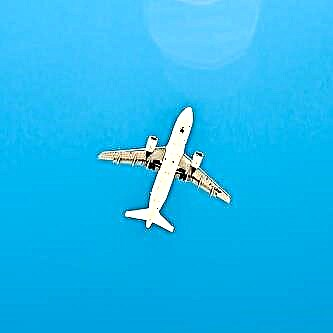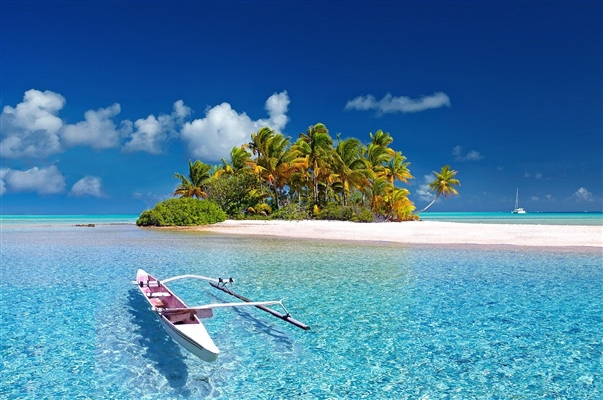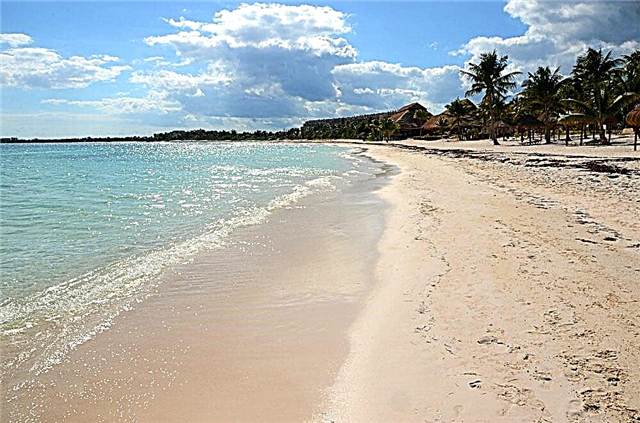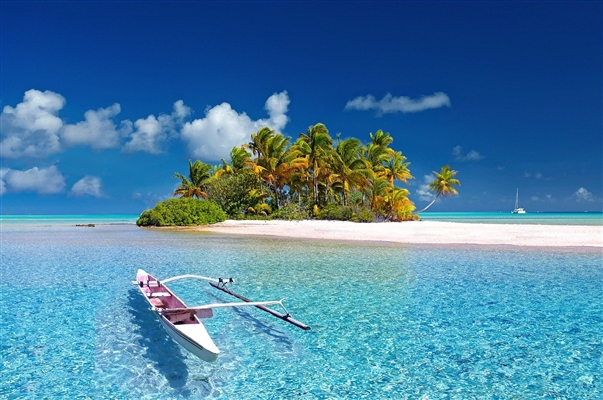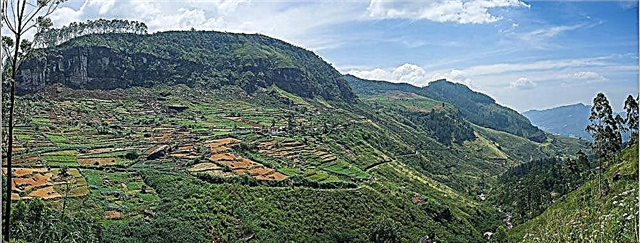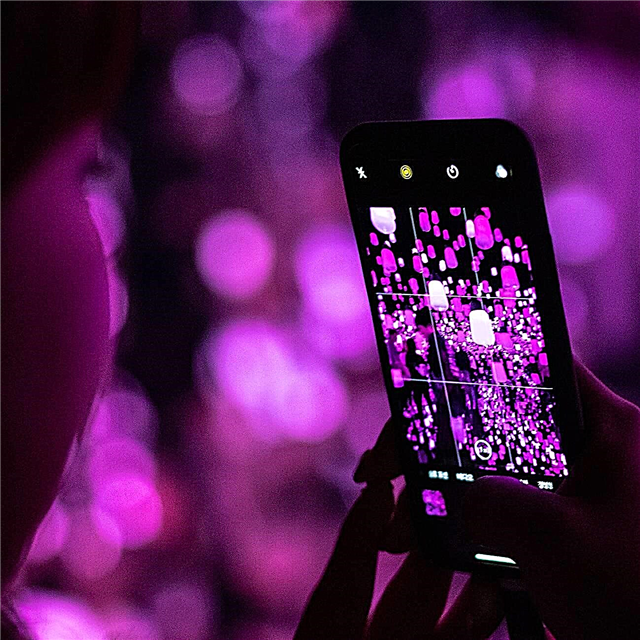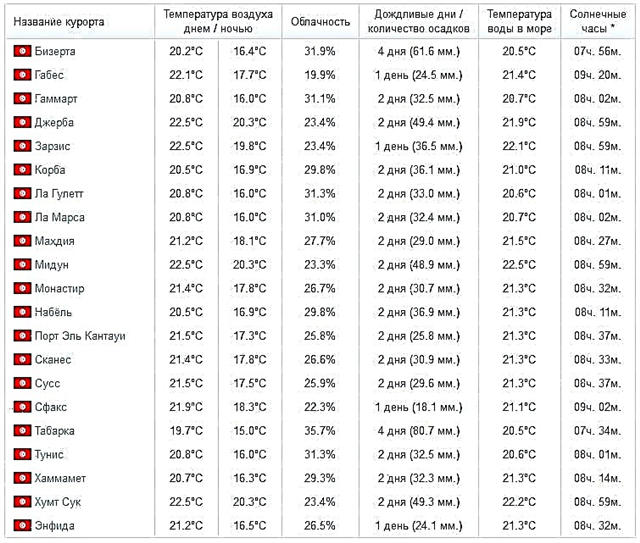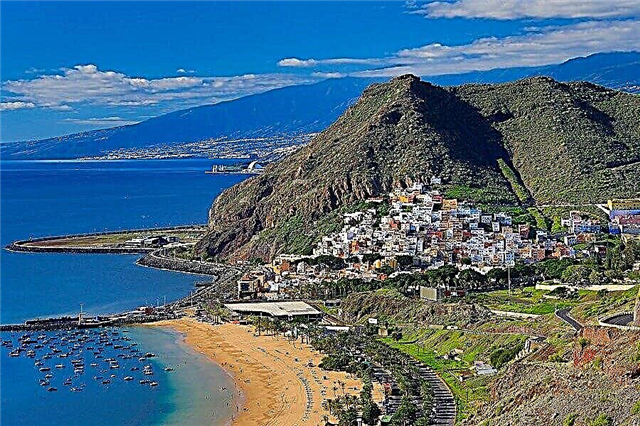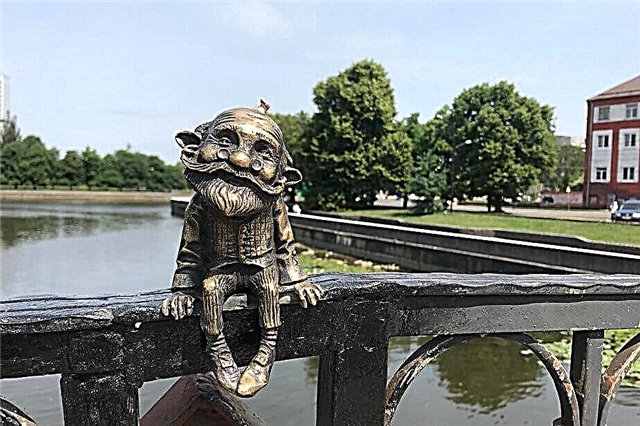Kaliningrad is the most European and westernmost capital of a constituent entity of the Russian Federation. In the past, the city was called Königsberg and belonged to the territory of Germany. The Kaliningrad region was formed in 1946 and has become sufficiently Russified over so many years. However, on the streets of the city you can find many buildings and monuments from the German past of the city. Modern Kaliningraders are even trying to restore the lost evidence of past eras.
For example, the monument to Kant, the most famous inhabitant of these places, was lost, but a copy of it returned to the historical pedestal decades later. Military victories and people related to the city are immortalized. In recent years, more and more tourist-oriented art objects, such as the miniature fairytale character homlin, have appeared.
Historical and modern monuments of Kaliningrad
List of the most famous monuments and sculptures of the city.
Memorial to 1200 Guardsmen
The first monument that has appeared in the city since its transfer to the control of the USSR. It has been located on Gvardeisky Prospekt since 1945. At this place is the burial place of soldiers who died during the assault on Koenigsberg. The project was developed by a group of sculptors led by Juozas Mikenas. The obelisk is the central part of the memorial. Its height is 26 meters. On the edge there are images of medals, weapons and battle scenes.

"Motherland"
The main city monument rises at the intersection of Teatralnaya and Leninsky Prospekt. Created in 1974 according to the project of the sculptor Boris Edunov. Stands on an artificial hill. Granite steps lead to the sculpture of a woman symbolizing the homeland. A plate is fixed on the pedestal reminding of the establishment in 1946 of the Kaliningrad Region, the westernmost subject of the Russian Federation.

Monument to fellow-cosmonauts
Another name is “To the Conquerors of the Nearby Universe”. A sculptural group led by Boris Edunov worked on the project. The installation took place in 1980. First of all, the monument is dedicated to A. Leonov, Y. Romanenko and V. Patsaev. Bas-reliefs with their images adorn the pedestal. The monument is a high circle in which the figure of the cosmonaut stands. A quote from Tsiolkovsky is applied along the perimeter of the orbit.

Monument to the heroes of the First World War
The first monument on this topic in Russia was opened in 2014. The authors are sculptor S. Shcherbakov and architect I. Voskresensky. The height of their project is 11 meters. In one composition, three military groups are united, who made an equal contribution to the victory over the enemy. In the center is an officer-nobleman, and on the sides - a peasant and a commoner, called to service. Below are the nurse and the wounded warrior. A public garden was laid out around the monument.

Monument to Peter I
It is located in the city sculpture park on the island of Kant. The work of the sculptor V. Mokrousov took its current place in 1983. The monument is made of bronze, and its pedestal is trimmed with granite. The emperor is depicted in full growth, he leans on the ship's steering wheel. The composition contains the following meaning: Peter I led the country to new achievements, despite obstacles and circumstances.

Monument to V.I.Lenin
Installed in 1958. The original location is Victory Square. He stood there until 2004. In connection with the beginning of the construction of the cathedral, the sculpture by V. Topuridze was dismantled. The restoration and search for a new location took several years. In 2007, the monument was placed on Leninsky Prospekt near the House of Arts. It was surrounded by small forged posts and four lanterns.

Monument to Friedrich Schiller
It has been located on Prospekt Mira since 1910. The project belongs to the sculptor S. Cauer. The figure of the poet is cast from bronze in full growth. On a white high pedestal there is a plate with the years of the life of the writer. During the Second World War, the monument suffered serious damage. It underwent a major restoration in the 50s. Around they laid out a public garden, where people gather in the evenings now.
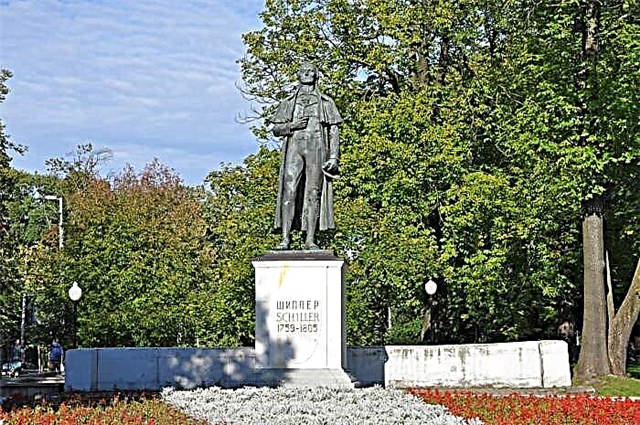
Monument to Immanuel Kant
The original monument was erected in 1864, 60 years after Kant's death. The sculpture itself was made by H. D. Rauch, and the pedestal to it was made by R. Müller, the court master of stone affairs. During the Second World War, the monument was hidden to protect, and since then it is considered lost. In the early 90s, a copy of Rauch's work was created at the expense of the patron Marion Denhoff and installed on the previous pedestal.

Monument to Munchausen
Located in the central city park since 2005. The monument was donated to Kaliningrad by Bodenveden, the birthplace of Munchausen. The Baron visited the then Königsberg twice. The attraction was made by Petau, a master of art forging. In a steel plate, he carved the silhouette of Munchausen flying through on the cannonball. The present and past names of the city are written on both sides of the monument.

Monument to V.S.Vysotsky
Inaugurated in 2006 on the territory of the central city park. The appearance of the monument was timed to coincide with the 60th anniversary of the founding of the Kaliningrad region. The height of the bronze High is about 3 meters. He sits and leans on the guitar. The author of the project is Saipov. His variation of the monument was chosen at the last moment. Initially, the favorite was the idea of Lyudmila Bogatova, who wanted to portray Vysotsky walking towards the audience.

Memorial to the Soldiers-Scouts
It has been located in Victory Park since 2013. Its creation was initiated by several veteran and military associations associated with intelligence structures. So they wanted to honor the memory of the fallen comrades, both during World War II and in local wars of later periods. The sculptural group stands on a pedestal and is designed to show the different types of activities of the scout.

"Fighting bison"
The monument was erected in 1912, when the city was still called Königsberg. The author is the sculptor-animist Gaul. The artist observed the animals during the creation of the sculpture in order to convey the manner of their movement. Bison are made in full size and stand on a high pedestal. They met in a fight and symbolize perseverance and strength. In front of the monument there is a pool where water flows from holes in the foundation.

Monument to A. Marinesco
Dedicated to the Hero of the USSR and opened in 2001. The place of installation is the embankment, also named after the captain of the 3rd rank Alexander Marinesco. The bronze monument is the work of the sculptor F. Moroz. He drew a cross-section of the submarine to show Marinesco navigating the submarine. 10 years after its opening, the monument has become a cultural heritage site of regional importance.

"Sailor with a monkey"
Located in an area with German style houses. A “Fish Village”, a colorful ethnographic center, was organized here. The sculpture was installed in 2007. The author of the composition is Alexander Ben. His sailor sits on a bench with a pipe in his mouth, and a little monkey climbs on his shoulder. A monument was made in Smolensk. Its height is about 1.5 meters, and its weight is about 300 kg.

Monument to A.M. Vasilevsky
The only monument in the country dedicated to the commander. Opened in 2000. The marshal was depicted sitting in thought with an overcoat draped over his shoulders. The sculpture is made of granite and stands on a wide pedestal. Since 2011, the monument has been a cultural heritage site of regional significance. It traditionally hosts annual Victory Day events and meetings of veterans.

Monument to Nicholas the Wonderworker
It is part of a single sculptural ensemble with a monument to fishermen. It is located near the Museum of the World Ocean on the Pregolya bank. Two sails of fishing schooners appeared here in 1978. The monument was restored by 2008, and a year later a sculpture of Nicholas the Wonderworker was installed in the foreground.This saint is the patron saint of travelers. The memorial complex was brought to a more harmonious appearance in 2010.

"World clock"
Another name is "Time Zones". The metal column is located on Shevchenko Street. At the top, it expands to provide more space for the dials. They are set to the time of different time zones. The pedestal of the monument is a fragment of the world map. There are also plates with the names of cities and the distance from them to Kaliningrad. The area around is paved with paving stones.

Memorial sign in honor of the 100th anniversary of the Battle of Gumbinnen
The opening took place in 2013 at the regional Historical and Art Museum. The monument looks like three stylized flames of different sizes. The idea of the authors is to place the dial in the center of the composition and to count down to the centennial anniversary of the Battle of Gumbinnen. It was implemented, but after a few days the clock went astray. They were dismantled for repair, but the mechanism never returned to its place.

Commemorative sign to the Baltic sailors
The large boat is mounted on a pedestal in the form of a wave, which simulates movement. The opening of the monument took place in 1978. Nearby are two steles dedicated to the sailors who participated in the East Prussian military campaign. In the 90s, it was decided to reconstruct the monument. His condition turned out to be so deplorable that the hull could not be restored. By 2010, it was completely replaced, like a number of other parts.

Monument to Francysk Skaryna
The sculpture is a gift from the Republic of Belarus to the Kant University. The monument was erected in front of its building in 2004. The author of the project is Anatoly Artimovich. Francisk Skaryna is a Belarusian pioneer printer who served in the first half of the 16th century at the court of Duke Albrecht. He also gained fame as a translator, writer and researcher. His work continues to be studied, including in Kaliningrad.

"Boy with a laptop and a cat"
The monument is located at the entrance to the Telecom office. A bronze boy with a laptop on his lap, sitting on a bench next to a cat, appeared here in 2010. The project was carried out by the creative group of O. Salnikov. They wanted to show the development of technologies, their availability and widespread use through the prism of the eyes of an ordinary layman. Although the monument is relatively new, in some places it has already noticeably “worn out”.

Monument to Julius Rupp
The current variation of the monument is a copy of the original work of Kyote Kollwitz, Rupp's granddaughter. A bronze stone with a portrait of a rebellious preacher was installed in the city in 1991. Julius became famous as the creator of Friends of the Light, an evangelical community with progressive views. In 1844, he made a speech right from the pulpit of the church and renounced the church, since his worldview did not coincide with the interpretation of Christian teachings.

Monument to the Russian artilleryman
Installed on the street of the same name in 2013. The artilleryman is depicted in full growth next to the cannon. It is clear from his uniform that he is a warrior of the 18th-19th centuries. The bronze monument is a tribute to the memory of the defenders of the fatherland of different periods. The attraction is located far from the main tourist routes, so it is not in great demand. But those travelers who get here get interesting pictures.

Monument to Alexander Nevsky
Opened in 2018 on Vasilevsky Square. The monument was installed in the center of the roundabout. The work was paid for by a philanthropist who wished to remain anonymous. The author of the monument is Vadim Tsyganov, the sculptor is Andrey Sledkov. Bronze Alexander Nevsky holds a sword in his right hand, and a banner in his left, and a worship cross behind him. The details of the monument contain many symbols and references to historical events.

"Border guards of all generations"
The project of the monument was launched into development in 2014 at the initiative of the Council of Veterans of the Regional Border Guard Service. The author of the concept was Vladimir Kovalev. The creation of the monument took 2 years. The composition consists of two obelisks - border pillars and two walls depicting scenes from the life of border guards. On the first - the protection of the border during the Great Patriotic War, on the second - the modern period.

"Kaliningrad fisherman"
The monument can be called unlucky: due to the construction of new facilities and the closure of old ones, it “moved” several times. In addition, copies of this sculpture can be found in other settlements of the region, so the monumental fisherman with tackle in his hands is not unique. Now the monument is erected at the entrance to the city from the side of the Primorsky ring. Over the years, it has faded a little.

Monument to Soldiers-Internationalists
Dedicated to the participants of the Afghan military campaign, as well as the military who took part in other battles outside of Russia. Opened in 1998 in the Yunost park. The composition represents the silhouette of a chapel, and in the nutria there are figures of parents grieving for a child who died on the battlefield. Nearby there is a granite slab and memorial plaques. The land was brought here from the places where local soldiers were killed.

"Fairy Mushroom and Forest Fairy"
The monument was erected in the central city park in 2013. The sculpture is made of brass. It is a large mushroom with a graceful fairy sitting on it. A time capsule was laid under the pedestal of the monument. Until 2028, it will store children's drawings on the theme of Kaliningrad in the future. The area around is paved with tiles, shrubs were planted and flower beds with tulips were laid out.

Homlin figure on the Honey Bridge
This miniature fairytale character appeared in the city in 2018. He was seated on the railing of the bridge, and it is difficult to walk past without a smile. Homlins are creatures like brownies. They live next to people and love to make all kinds of amber products. It is planned that homlins will become one of the symbols of Kaliningrad. Subsequently, at least seven such figures will be distributed along the streets.

Som Monument
During the reconstruction of the High Bridge, divers groped a huge catfish at the bottom. They decided to erect a monument to him, for which they announced a competition for the best sketch. The victory was won by six-year-old Peter Zoroaster. Andrey Shevtsov became the sculptor. In 2018, the grand opening of the bronze monument took place. A young author, who was already seven years old, was also present. Rubbing the head of a catfish is to call on good luck.


